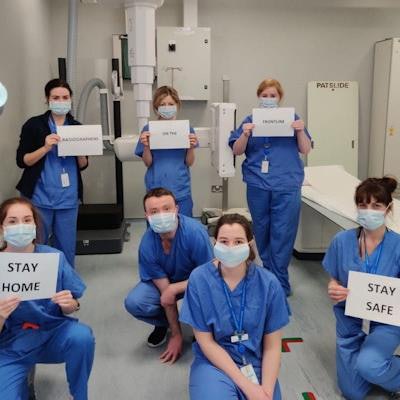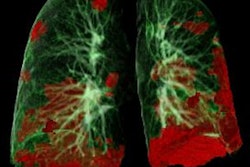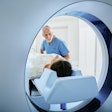
The omicron wave of COVID-19 is fading in most countries. But there's certain to be another variant not far behind it. How ready is radiology for the next wave? Researchers from France found that some work remains in a research letter published on 8 March in Radiology.
But there were gaps in compliance with the RSNA's recommendations -- gaps that highlight work that needs to be done if radiology departments are to be prepared for the next pandemic wave, wrote a team led by Dr. Guillaume Herpe of University Hospital Centre Poitiers in France.
"Adherence rate was good for [the majority of the RSNA's recommendations]," the group noted. "[However,] three items did not reach 50% adherence: a dedicated device COVID-19 device for ultrasound, x-ray, and MRI exams, access to remote radiology interpretation, and a dedicated radiographer team."
In March 2020, the RSNA released a document the outlined how radiology departments could reorganize to cope with the COVID-19 pandemic. How closely were these guidelines followed?
Herpe's group addressed the question through a survey study it conducted in June 2020 regarding the period between March and April of that year. Forty French radiology departments across a range of facility types were invited to participate, and 38 did so.
The team found that the survey respondents showed more than 50% compliance with the following RSNA recommendations.
| Compliance with RSNA recommendations for managing COVID-19 surge | |
| Recommendation | Percent compliance |
| Put standard operating procedures in place for radiologic imaging for patients suspected of COVID-19 | 100% |
| Prevent PPE supply shortage | 95% |
| Implement standard operating procedures for radiologic imaging for patients suspected of COVID-19 | 92% |
| Screen for COVID-19 before performing interpretation | 82% |
| Perform imaging at specific locations and dedicate at least one device for COVID-19 patients | 76% |
| Train radiographers to follow COVID-19 procedures | 74% |
However, three recommended actions didn't reach the 50% threshold among survey participants:
- Establish a dedicated device for COVID-19 patients for ultrasound, x-ray, and MRI.
- Improve remote radiology interpretation access.
- Establish a dedicated COVID-19 radiographer team.
This last action can be quite difficult to implement, the group noted.
"Indeed, reorganization of the entire radiographer staff around a single disease can be challenging, considering that other activities such as emergency and oncological care have to be maintained," the authors wrote.
The lack of adherence to some of the RSNA's recommendations for coping with COVID-19 show the work that needs to be done to get ready for any future pandemics, Herpe and colleagues wrote.
"While substantial modifications of radiology department organization to face the COVID-19 pandemic were applied, remote reading, dedicated devices, and team training would have to be improved in the event of another outbreak," they concluded.



















